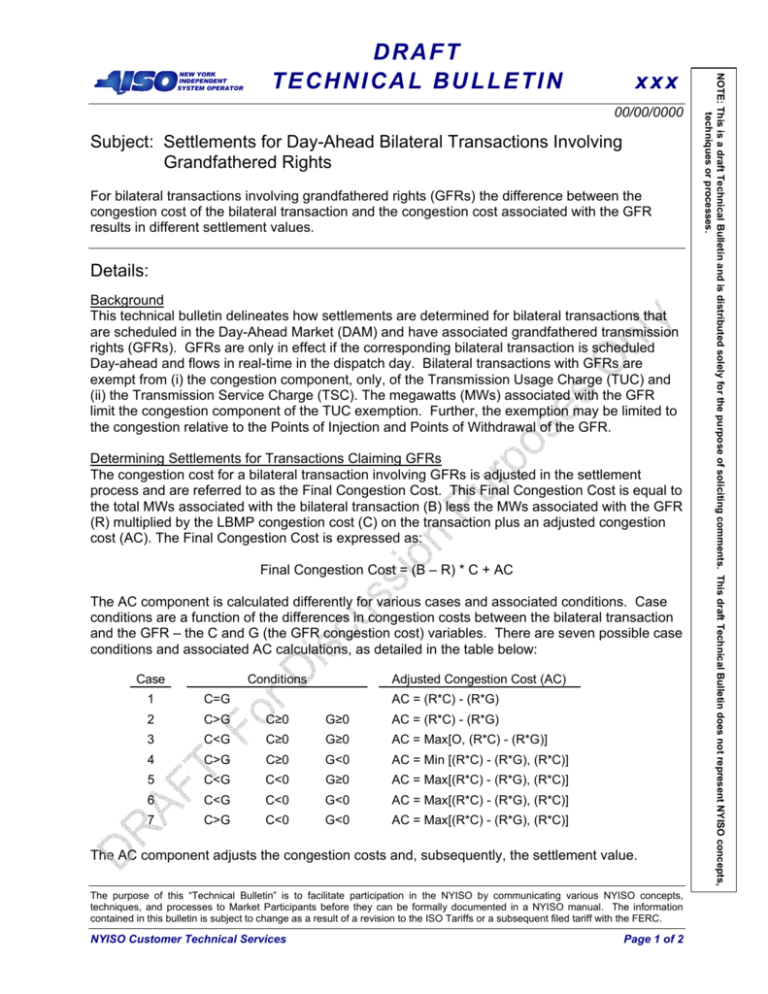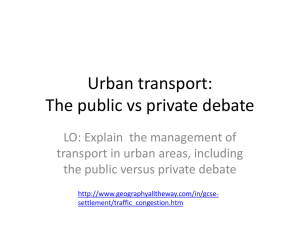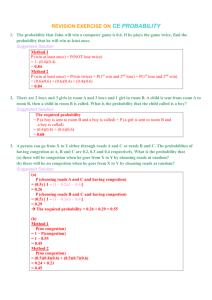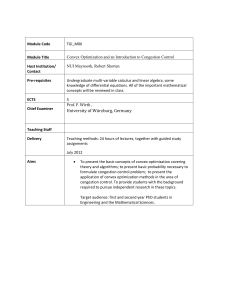TECHNICAL BULLETIN xxx DRAFT
advertisement

xxx 00/00/0000 Subject: Settlements for Day-Ahead Bilateral Transactions Involving Grandfathered Rights For bilateral transactions involving grandfathered rights (GFRs) the difference between the congestion cost of the bilateral transaction and the congestion cost associated with the GFR results in different settlement values. Details: Background This technical bulletin delineates how settlements are determined for bilateral transactions that are scheduled in the Day-Ahead Market (DAM) and have associated grandfathered transmission rights (GFRs). GFRs are only in effect if the corresponding bilateral transaction is scheduled Day-ahead and flows in real-time in the dispatch day. Bilateral transactions with GFRs are exempt from (i) the congestion component, only, of the Transmission Usage Charge (TUC) and (ii) the Transmission Service Charge (TSC). The megawatts (MWs) associated with the GFR limit the congestion component of the TUC exemption. Further, the exemption may be limited to the congestion relative to the Points of Injection and Points of Withdrawal of the GFR. Determining Settlements for Transactions Claiming GFRs The congestion cost for a bilateral transaction involving GFRs is adjusted in the settlement process and are referred to as the Final Congestion Cost. This Final Congestion Cost is equal to the total MWs associated with the bilateral transaction (B) less the MWs associated with the GFR (R) multiplied by the LBMP congestion cost (C) on the transaction plus an adjusted congestion cost (AC). The Final Congestion Cost is expressed as: Final Congestion Cost = (B – R) * C + AC The AC component is calculated differently for various cases and associated conditions. Case conditions are a function of the differences in congestion costs between the bilateral transaction and the GFR – the C and G (the GFR congestion cost) variables. There are seven possible case conditions and associated AC calculations, as detailed in the table below: Case Adjusted Congestion Cost (AC) Conditions 1 C=G AC = (R*C) - (R*G) 2 C>G C≥0 G≥0 AC = (R*C) - (R*G) 3 C<G C≥0 G≥0 AC = Max[O, (R*C) - (R*G)] 4 C>G C≥0 G<0 AC = Min [(R*C) - (R*G), (R*C)] 5 C<G C<0 G≥0 AC = Max[(R*C) - (R*G), (R*C)] 6 C<G C<0 G<0 AC = Max[(R*C) - (R*G), (R*C)] 7 C>G C<0 G<0 AC = Max[(R*C) - (R*G), (R*C)] The AC component adjusts the congestion costs and, subsequently, the settlement value. The purpose of this “Technical Bulletin” is to facilitate participation in the NYISO by communicating various NYISO concepts, techniques, and processes to Market Participants before they can be formally documented in a NYISO manual. The information contained in this bulletin is subject to change as a result of a revision to the ISO Tariffs or a subsequent filed tariff with the FERC. NYISO Customer Technical Services Page 1 of 2 NOTE: This is a draft Technical Bulletin and is distributed solely for the purpose of soliciting comments. This draft Technical Bulletin does not represent NYISO concepts, techniques or processes. NEW YORK INDEPENDENT SYSTEM OPERATOR DRAFT TECHNICAL BULLETIN TB xxx Settlements for Transactions Involving GFRs Example A bilateral transaction is scheduled in the DAM for 150 MWs with 100 MWs of GFRs. The congestion cost on the bilateral transaction is $0.30 and the congestion cost on the GFR is $0.20. Since the congestion cost on the transaction is greater than the congestion cost on the GFR and both congestion costs are greater than 0 then this condition corresponds to case #2 in the table above. The Final Congestion Cost is determined as follows: Final Congestion Cost = (B – R) * C + AC = [(150 – 100) * $0.30] + [(100*$0.30) – (100*$0.20)] = $15 + $10 = $25 In this example, the congestion cost of the bilateral transaction was adjusted from $50.00 (or 150 MW * $0.30) to a Final Congestion Cost of $25.00. NYISO Customer Technical Services Page 2 of 2





